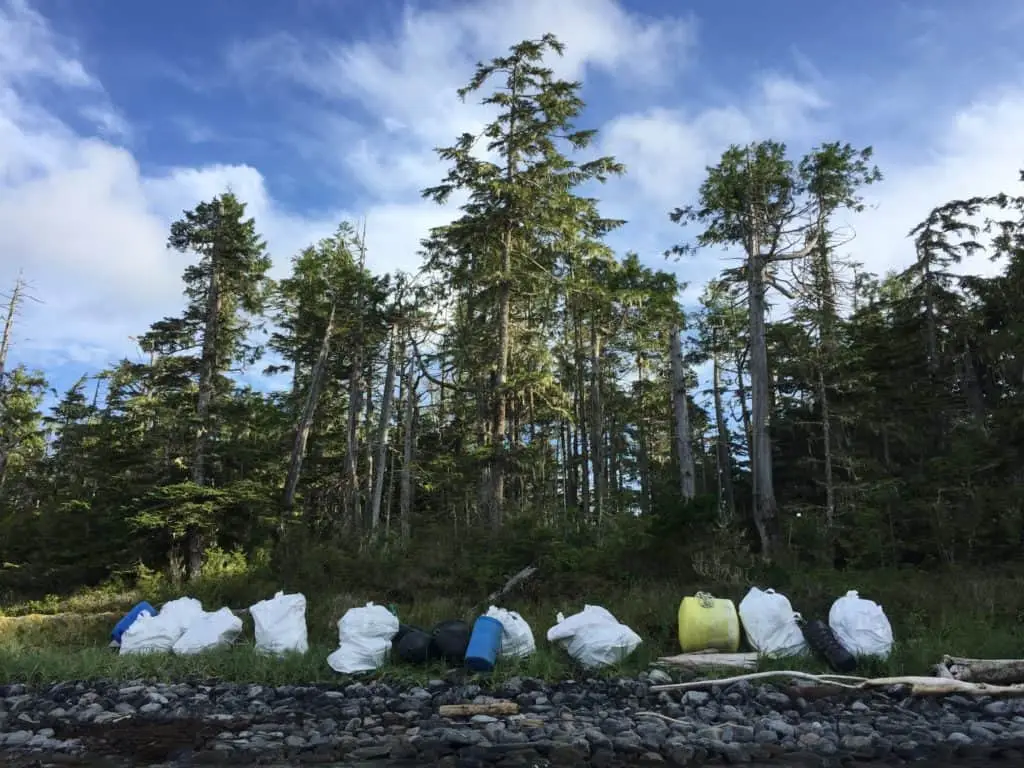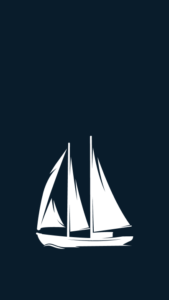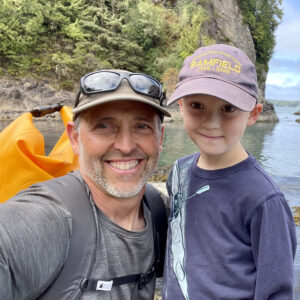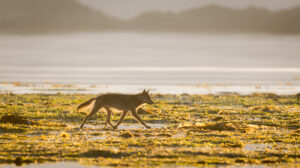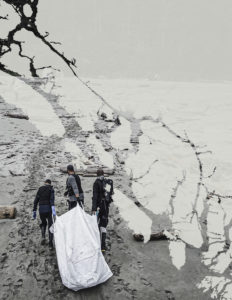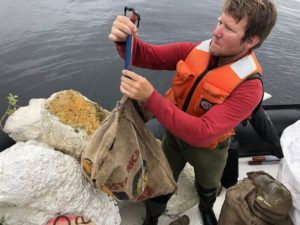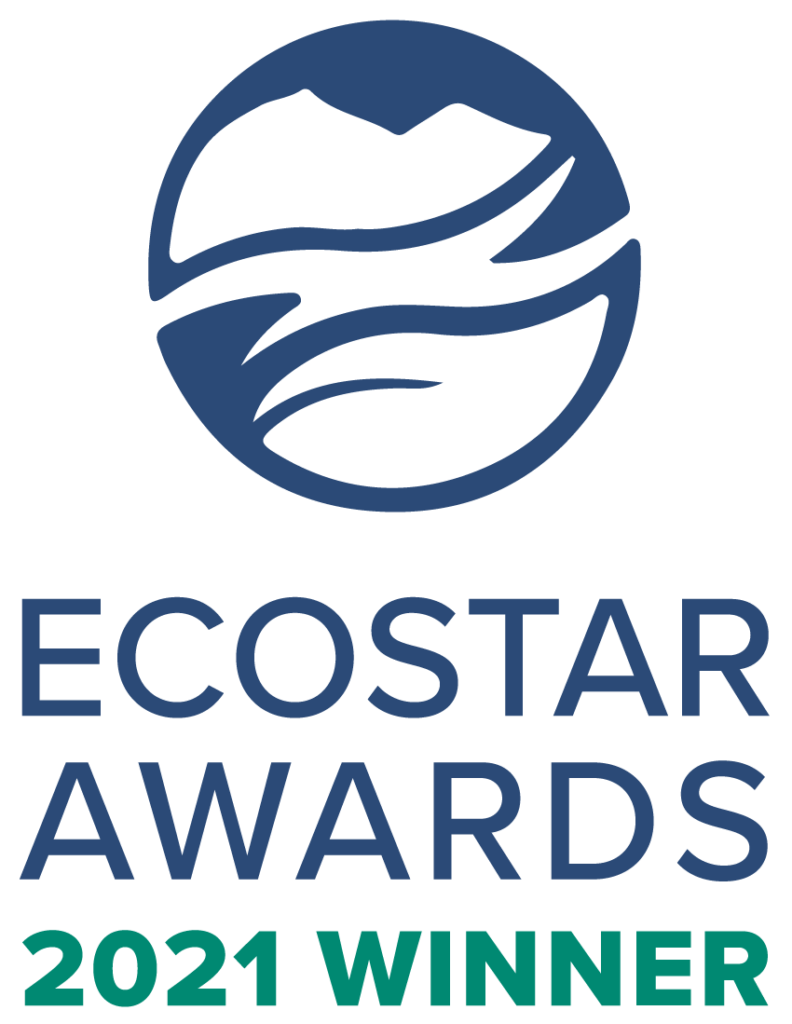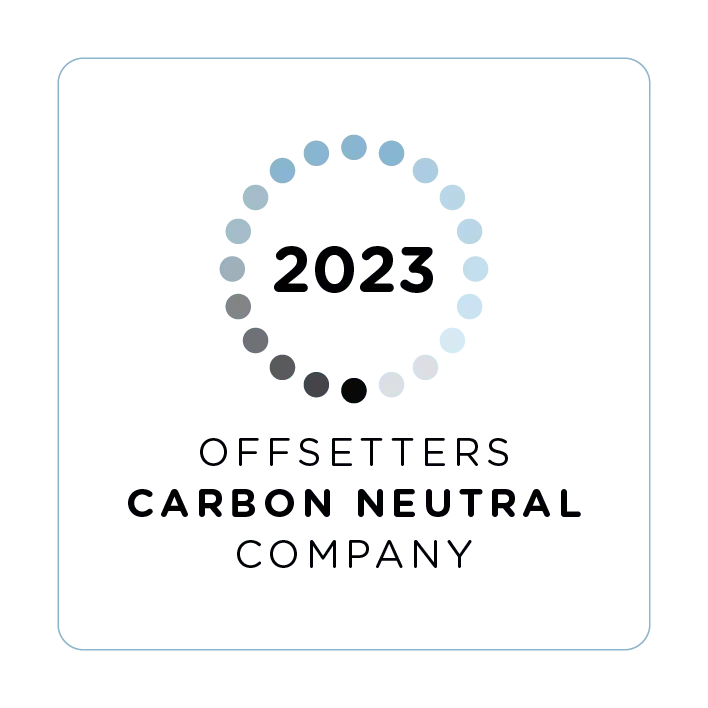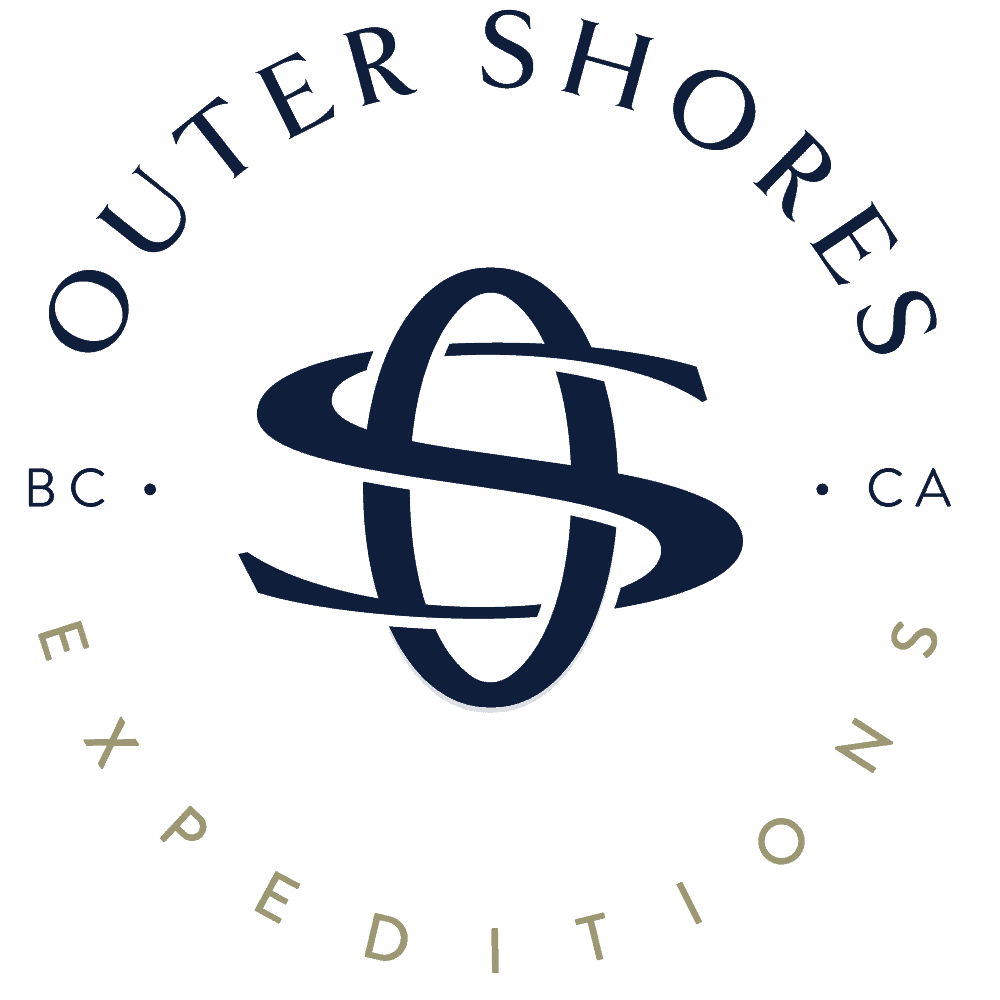MDRI Expedition #1 – Calvert Island to Seaforth Channel (Wuikinuxv and Heiltsuk Nation Territories)
On August 19th, 2020, our MDRI fleet of nine vessels departed Port Hardy. Today we would cross Queen Charlotte Sound, heading north around Cape Caution to the entrance to Rivers Inlet, in Wuikinuxv First Nation territory. On route, we encountered mammal-eating killer whales, humpback whales, Pacific white-sided dolphins, sooty shearwaters, seals and sea lions, and numerous sea otters. And while it had been 30+ degrees and extremely dry when we left southern Vancouver Island four days earlier, we were now experiencing temperatures in the low teens, and torrential rain.
That night, while anchored in the Penrose Islands and Open Bight, we held our first 8:00 PM Captains Call via VHF radio, which would become a critical nightly tradition for the next six weeks as our fleet navigated difficult terrain, complex shorelines, reported daily events (areas covered, # kg collected, # helicopter lift bags filled), and coordinated our plans for the following day. We reported any injuries, “lessons learned”, and that our crews were healthy and COVID-free. We also used satellite-based calling, texting, and email for coordinating logistics and communicating with all our support teams at home.
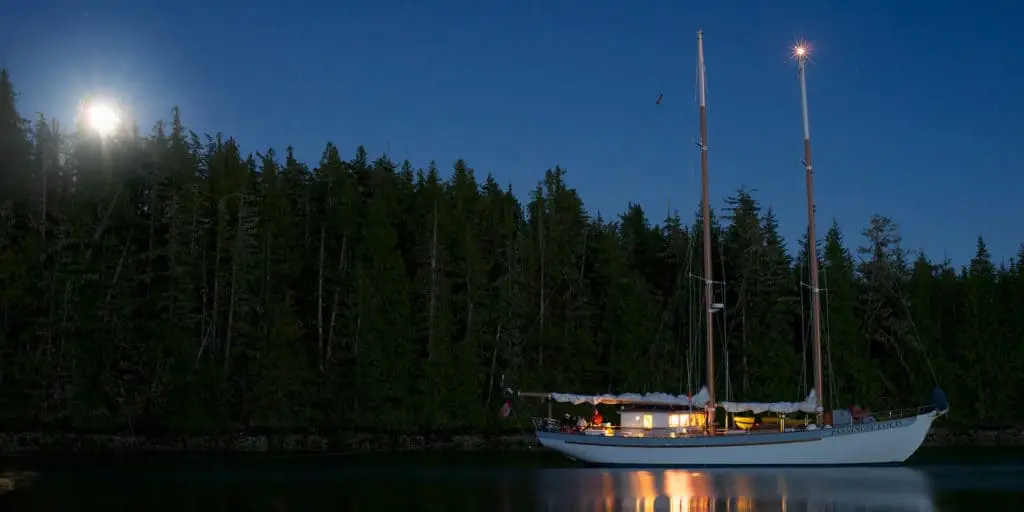
Over the first couple of days, marine debris removal began somewhat slowly as we developed our routines and efficiencies. Initially, ground crews were reporting daily collections of ~250 kg; however, in the days and weeks ahead this number quickly climbed to 1000-1500 kg/day (x 9 vessels!). It also quickly became clear to us that finding marine debris was not going to be difficult, rather we would be far more limited by time, and even space on the barge.
The region we were targeting, almost 1,000 kilometres of coastline, focused on the remote outer islands of the Great Bear Rainforest. Not only are these islands hard to get to, but also they’re exposed to the open Pacific and notorious for huge ocean swell and winter storms. With these high-energy ocean storms, the islands and inlets – particularly southwest facing beaches – receive all kinds of marine debris being washed ashore, sometimes as high as 15 m above the shoreline, and well into the understory of adjacent forests.
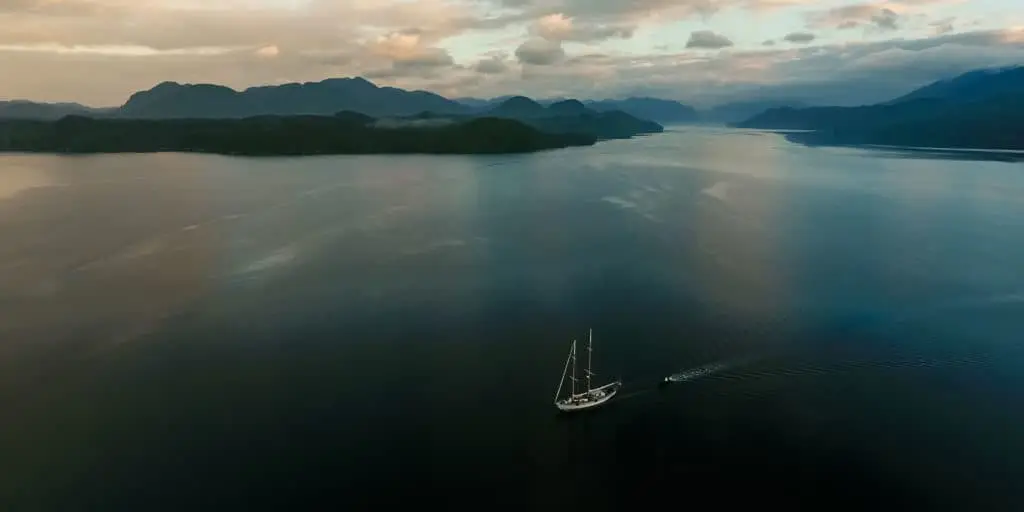 [/mpc_textblock][vc_empty_space height=”22px”][mpc_textblock content_width=”100″]Our daily routines and process for collecting debris came to look something like this: After being assigned an area to target, the first step in the marine debris removal process was simply getting our crews ashore. Often this was straightforward, taking care not to hit rocks or foul the prop with kelp as we approached the shoreline. But often ocean swell, surf, surge channels, and steep rocky shores required extreme caution and the skill of our highly experienced boat handlers.
[/mpc_textblock][vc_empty_space height=”22px”][mpc_textblock content_width=”100″]Our daily routines and process for collecting debris came to look something like this: After being assigned an area to target, the first step in the marine debris removal process was simply getting our crews ashore. Often this was straightforward, taking care not to hit rocks or foul the prop with kelp as we approached the shoreline. But often ocean swell, surf, surge channels, and steep rocky shores required extreme caution and the skill of our highly experienced boat handlers.
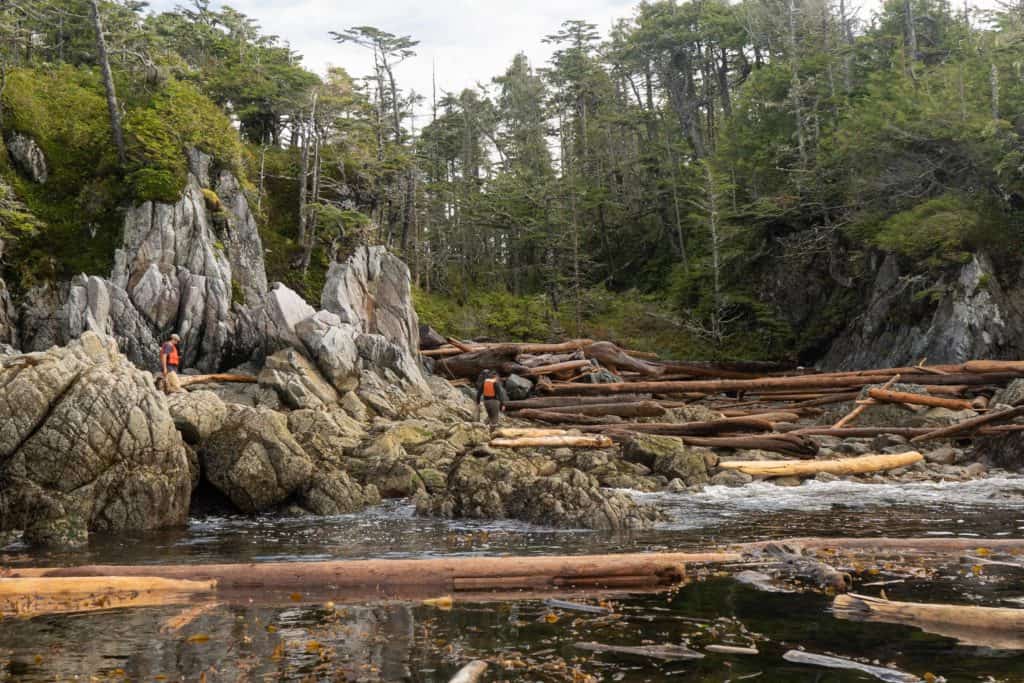
Once ashore, the process of collecting and removing marine debri begins. A critical first decision that must be made is where to establish a site for placing and filling lift bags that would be lifted off by a helicopter onto a barge near the end of each expedition. Lift sites have to be accessible by crews, have protection from waves and tides, and not be encumbered by overhead hazards that would make it difficult for the helicopter pilot.
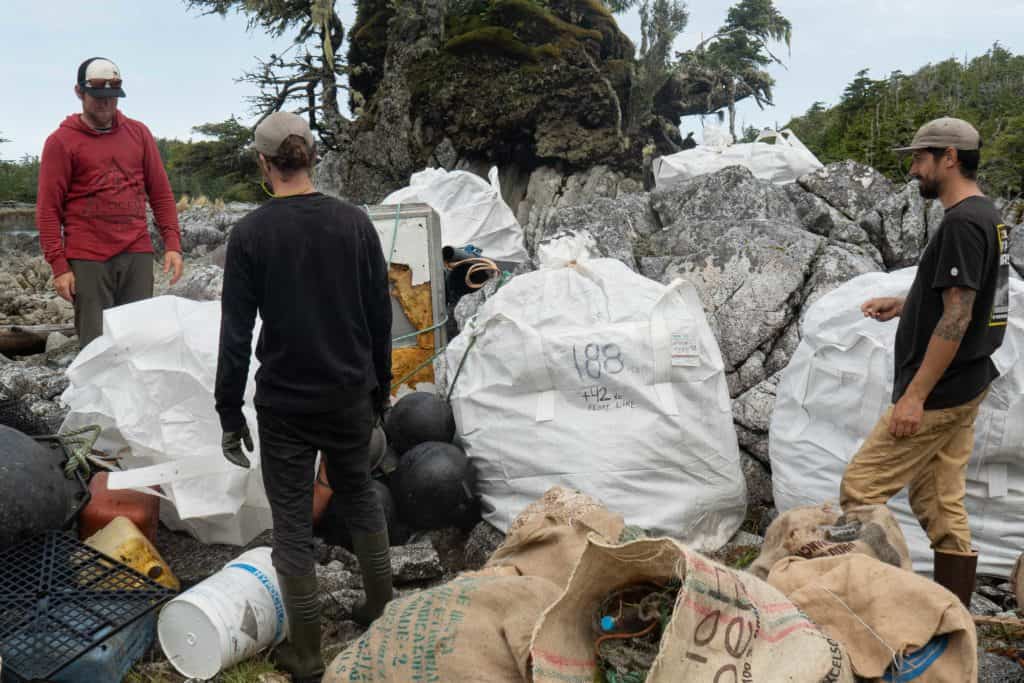
Once a suitable lift site was found, lift bags were set up and then marine debris was carried or dragged to these locations, often over quite difficult terrain and long distances. And often, we loaded debris into our skiff and transported it by water to our lift sites. This meant that we would handle debris twice; however, by creating clusters of lift bags (typically 3-10 bags), the helicopter crews were able to string multiple lift bags together (for maximum lifts of ~330 kg), and thereby minimize the expensive helicopter time required to clear each site.
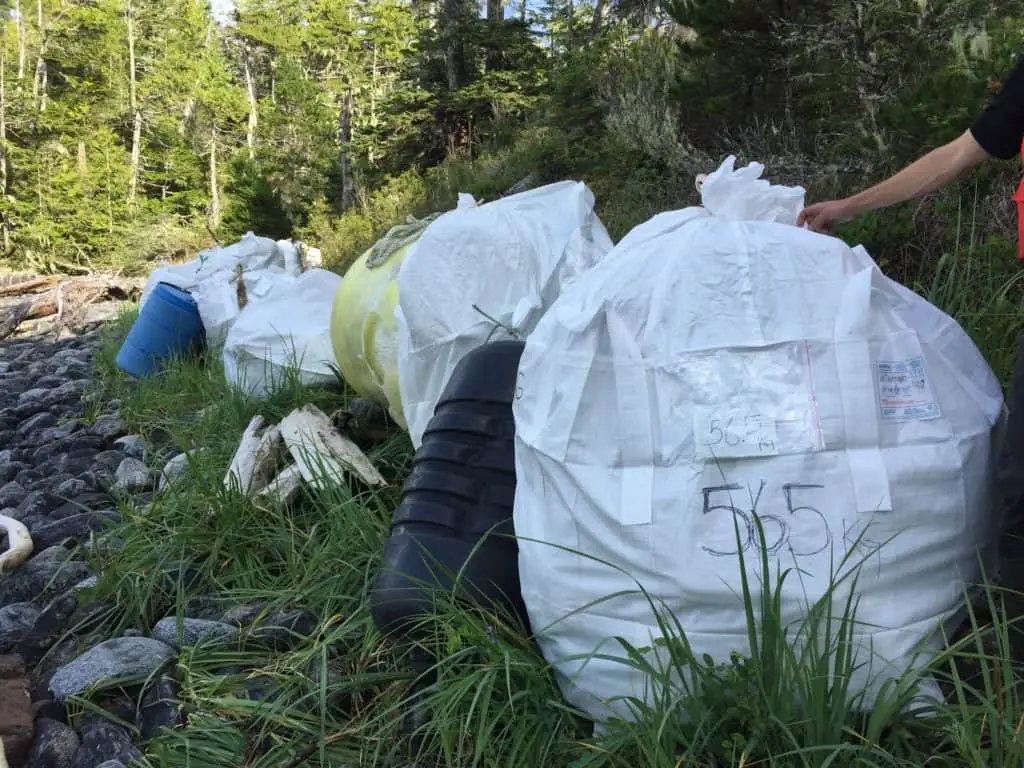
Back to the marine debris collecting, carrying, and dragging side of things, this was definitely the most challenging and physically demanding part of the job. To get a better sense of this, imagine rocky “beaches”, that include boulders, cliffs, log jams (sometimes several stories high), tidepools, and rows of drift seaweed and kelp. Now imagine masses of derelict fishing nets and rope tangled under logs or partially buried in patches of sand and gravel. Often nets and rope would have to be cut away with knives or dug out by hand, before they could be moved to lift bags.
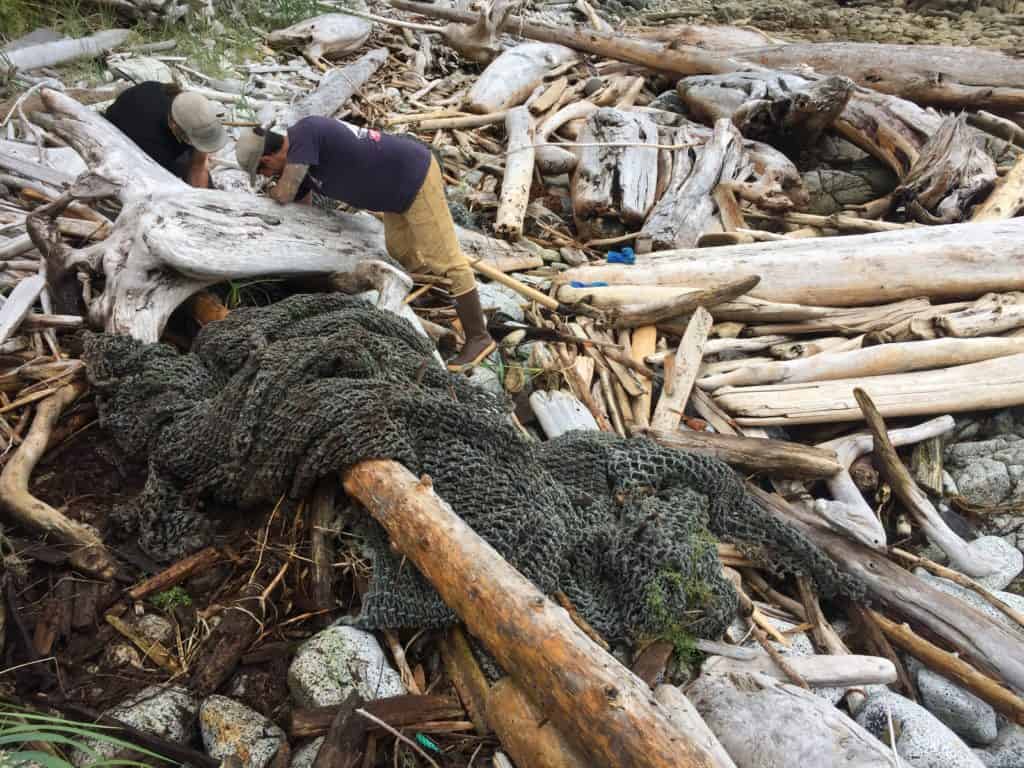
Also imagine plastic 45 gallon blue plastic barrels, plastic pallets, chunks of styrofoam (the size of your hand to the size of a queen-size mattress), hard-plastic fishing floats, car tires, water bottles, oil buckets, sports balls (soccer, basketball, football, baseball, tennis and table tennis), shoes (flip-flops, rubber boots, high-heels, Crocks, fisherman’s freezer boots, running shoes), and all the various single-use plastics (from ziplock bags and toothbrushes, and hairspray cans to shotgun shells). Sadly, anything and everything that’s made of plastic can be found along the outer islands and shorelines of British Columbia.
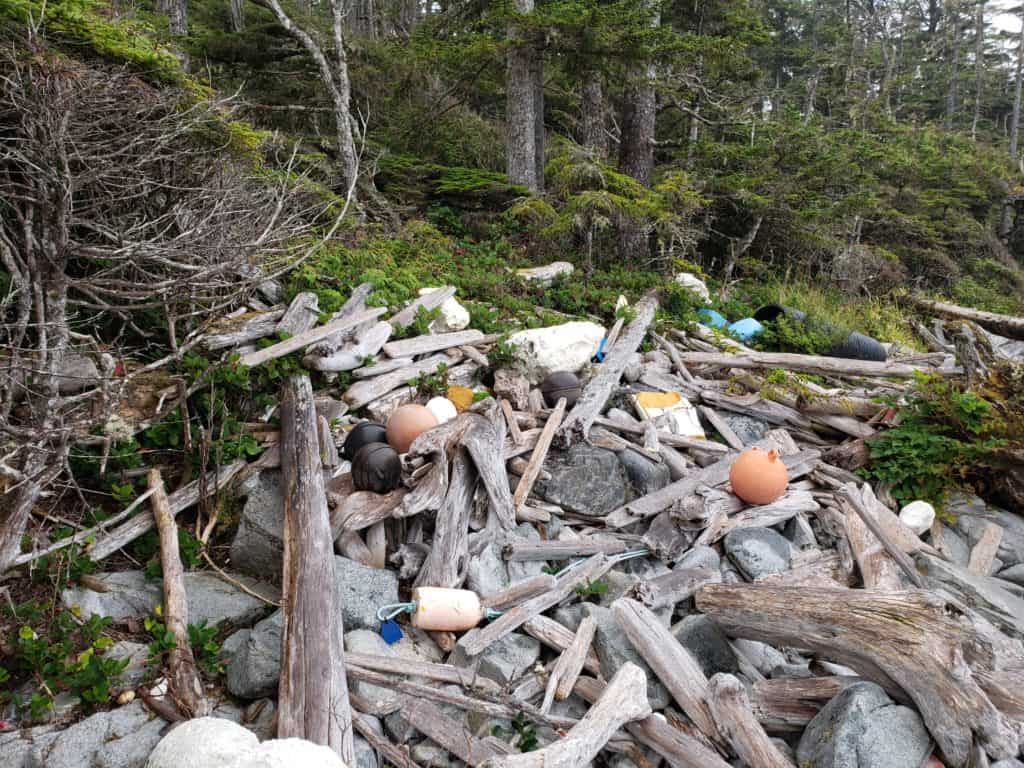
To quantify the different types, and ultimately the sources, of the marine plastics we collected, we employed a simple protocol for estimating the proportions of debris category types. Large objects were individually weighed and recorded as they were placed into lift bags. Small objects were placed into burlap sacks as crews scoured the beaches. Back at the lift sites, filled burlap sacks (originally filled with coffee beans), were individually weighed, dumped into the lift bags, and the proportions of material types were visually estimated for each burlap sack. For example, 60% plastic water bottles, 30% fishing gear, and 10% house-hold items. These data will be used in our final report to the government, as well as to help us draw attention to the sources of marine debris reaching our shores. Hopefully this tracking can provide enough data for finding future solutions so beach clean-ups like this won’t be needed in the future.
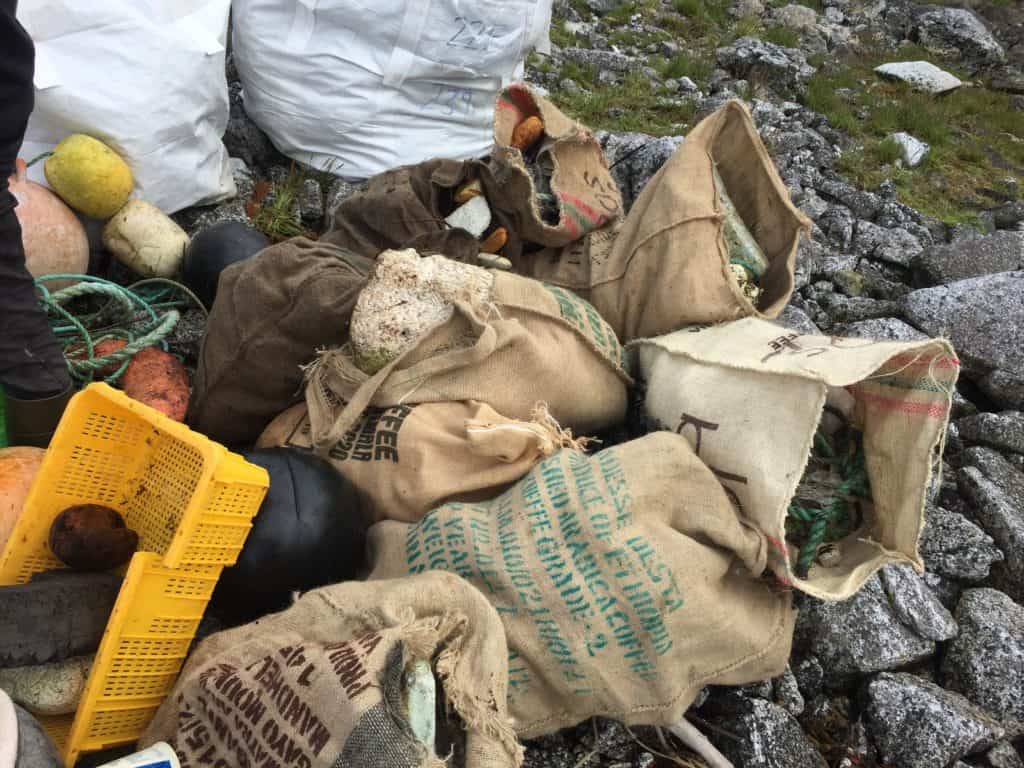
For the last phase of the removal process and each expedition, we contracted a tugboat, barge, and helicopter to get the lift bags off the shore and transported to northern Vancouver Island for disposal and recycling. This is a highly coordinated process, between our ships and ground crews, the helicopter crew, and the tug and barge. And, after all the hard work that went into filling each lift bag, it was extremely satisfying to watch our bags of collected marine debris literally being lifted off the shore and no longer posing a threat to wildlife and marine ecosystems.
We’d like to extend a huge thank you to the Airspan Helicopters and Heiltsuk Horizon Maritime Services (a partnership between the Heiltsuk Nation and Horizon Maritime) for their exceptional professionalism and support of this project, thank you!

By the end of MDRI Expedition #1, all the SSTOA crews were veteran debris collectors, typically collecting ~1000 kg/day of marine debris from outer shores of the Great Bear Rainforest. Ultimately, our first MDRI expedition removed ~61,000 kg of marine debris from ~600 km of shoreline. We were all heartened by this huge accomplishment and grateful to be part of this amazing project, but also overwhelmed by the realization of just how much more debris there is to remove, and the fact that there’s more arriving every day.
